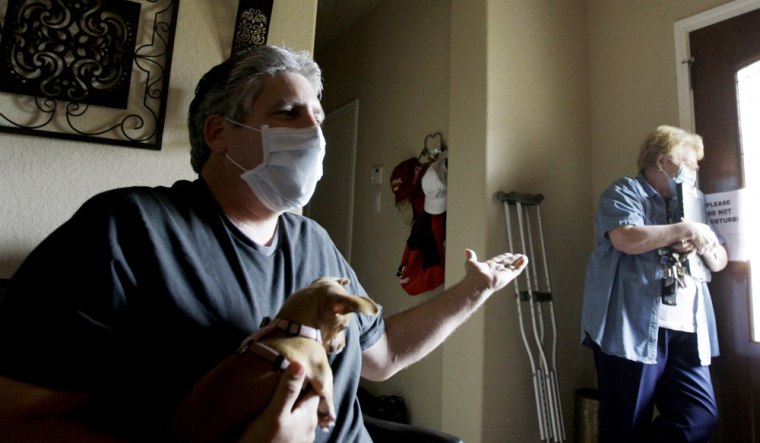Quarantine may seem the stuff of mediocre melodramas, but if the swine flu explodes into an epidemic, involuntary isolation could become a reality for more than a few unlucky Americans.
So far the U.S. Centers for Disease Control and Prevention has confirmed the death of a 23-month-old child in Texas and 68 documented cases of swine flu in the United States, with at least seven people hospitalized. In New York, Health Commissioner Thomas Frieden announced that "many hundreds" of New York City schoolchildren are sick with suspected cases of swine flu. Across the country, in Los Angeles, the coroner's office is investigating two possible deaths.
But states say they are ready to protect the public if the infection intensifies.
Many states adopted new legislation to deal with emerging health emergencies in the wake of Sept. 11, says James Hodge, a professor at the Johns Hopkins Bloomberg School of Public Health and executive director of the Centers for Law and the Public’s Health. Hodge and others at the center drafted a model for this kind of legislation that’s been adopted in whole or in part by 35 states.
Although the federal government can declare a state of emergency, that only serves to free up resources — such as its stockpiled medicines — for use by the states, Hodge explains.
The next steps, including the power to isolate or quarantine citizens, rests in the hands of the states, or in some cases, local governments. Most can choose to do so on a case-by-case basis.
Virginia and Florida, for instance, keep all the power at the state level, but other states such as Oregon share that authority with county and city governments, Hodge says.
Under ordinary circumstances, states and municipalities have to get a court order to isolate a person suspected of harboring a dangerous infection or to quarantine someone exposed to a deadly disease. But things get really streamlined once a state declares the situation to be an emergency.
Then due process can be overridden, at least temporarily, Hodge explains. In a health emergency, people can be forced into isolation or quarantine without the government getting a court order first.
In Pennsylvania, for instance, the state has the authority to quarantine whole areas of a city, if it's determined that that's the most efficient and practical way to protect the public, says Holli, deputy press secretary of the of health department.
Still, there usually are protections for civil liberties built into the emergency laws, experts say. And while the state or certain designated municipalities can isolate or quarantine people for the protection of the public without a court order in Pennsylvania, the government is required to argue its case before a judge within 24 hours. Then the court has 72 hours to render its judgment. So isolation without the supervision of a court won’t go on without end, Senior says.
In general the laws usually provide health care for those who are to be isolated or quarantined, says Hodge. “The point of isolation isn’t just to protect everyone else, it’s also to provide care to those who are infected,” he adds.
Governments usually don’t need to get so heavy handed, says Dr. Andrew Garrett, director for planning and response at The National Center for Disaster Preparedness at the Columbia University Mailman School of Public Health.
“Most people will voluntarily stay at home if they’re asked nicely,” Garrett says. “We saw that with SARS.”
People may think that quarantine and isolation are new concepts, but they’re not, says Garrett. “The word ‘quarantine’ comes from the Italian for ‘40 days’ and it came into use during the black plague,” he explains. “So the term has been around for a long time.”
While the original term dictated 40 days, a quarantine can last for as little as 40 minutes, Garrett says, pointing to the example of exposure to anthrax. In that case, people just needed to be decontaminated and then released.
And keep in mind, Garrett says, quarantines don’t have to be followed perfectly to be effective. In general, you assume that 10 percent of the quarantined population won’t follow the rules, he adds.
In a computer simulation of a smallpox epidemic, even a compliance rate of 50 percent was enough to beat back the disease, Garrett says.
“A quarantine isn’t going to stop all transmission, but it can slow the disease down enough to interfere with its natural history so that it fizzles out on its own or it can give you time to get medication — like antivirals — to people who need them.”
